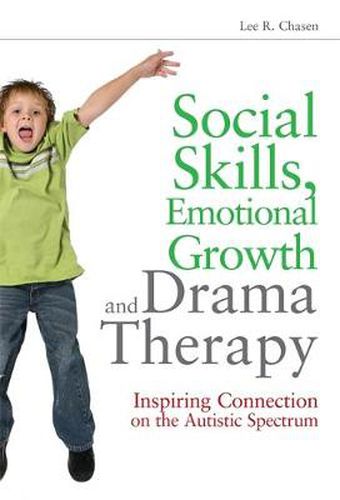Readings Newsletter
Become a Readings Member to make your shopping experience even easier.
Sign in or sign up for free!
You’re not far away from qualifying for FREE standard shipping within Australia
You’ve qualified for FREE standard shipping within Australia
The cart is loading…






Drama therapy provides valuable opportunities for children on the autism spectrum to interact and connect with others in a fun, supportive environment. The innovative model of drama therapy described in this book is rooted in neuroscience, and designed specifically to develop social, emotional and expressive language skills in children with autism spectrum disorders (ASD).
Lee R. Chasen provides an accessible explanation of the theoretical foundations, concepts and techniques that make up the approach, and describes in detail a thirty-session drama therapy program which uses creative and playful tools such as guided play, sociometry, puppetry, role-play, video modeling and improvisation. Scenarios drawn from his own practice provide useful insights into the practicalities of setting up and running such a program, as well as into how children’s social, emotional and expressive language skills deepen through their immersion in this unique approach.
This book will be of interest to drama and creative arts therapists, as well as teachers, school psychologists, counsellors and other professionals who work with children with autism spectrum disorders.
$9.00 standard shipping within Australia
FREE standard shipping within Australia for orders over $100.00
Express & International shipping calculated at checkout
Drama therapy provides valuable opportunities for children on the autism spectrum to interact and connect with others in a fun, supportive environment. The innovative model of drama therapy described in this book is rooted in neuroscience, and designed specifically to develop social, emotional and expressive language skills in children with autism spectrum disorders (ASD).
Lee R. Chasen provides an accessible explanation of the theoretical foundations, concepts and techniques that make up the approach, and describes in detail a thirty-session drama therapy program which uses creative and playful tools such as guided play, sociometry, puppetry, role-play, video modeling and improvisation. Scenarios drawn from his own practice provide useful insights into the practicalities of setting up and running such a program, as well as into how children’s social, emotional and expressive language skills deepen through their immersion in this unique approach.
This book will be of interest to drama and creative arts therapists, as well as teachers, school psychologists, counsellors and other professionals who work with children with autism spectrum disorders.